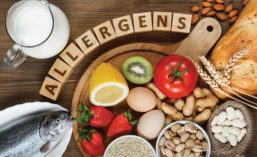Stuart L. Cantor PhD
Stuart Cantor, PhD, has written extensively for the leading US and European food trade magazines. His expertise encompasses development of controlled-release tablets and capsules as well as a variety of nutraceutical formulations and scale-up of products for healthy glucose management, weight loss and other health-related conditions. He can be reached at stubee2@gmail.com.
ARTICLES
Vitamin and mineral trends are global, with Asia-Pacific to become the fastest growing market.
Read More
Food Safety and Extended Shelflife are More Crucial Than Ever
The most common potential sources for foodborne illnesses are the highly perishable, animal protein-rich ingredients, specifically meats, fish, eggs, and milk and other dairy products
September 19, 2018
Allergen-Free Foods & Beverage Products
Identifying new ingredients and solutions for food allergies
July 24, 2017
Brain food and beverages to improve relaxation and concentration
Working harder and longer calls for foods and beverages that boost our brains or help us relax
April 14, 2017
Formulating with Dietary Minerals
More than a dozen minerals are required to maintain optimum health and prevent disease
November 16, 2016
Improving Immunity with Food
Approximately 50 million Americans suffer from some type of autoimmune disease, and all of these diseases impact diet
October 12, 2016
Developments in Diabetic Foods
New sweeteners and fat blends help food developers up their diabetes game
May 11, 2016
Digestive Dynamos
Clinical studies support the multiple health benefits from probiotics, dietary fibers, botanicals and enzymes
November 16, 2015
New Plant Protein Powerhouses
The most abundant dietary protein sources on earth are in fruits and vegetables—and food and beverage processors are poised to take full advantage of that
September 11, 2015










